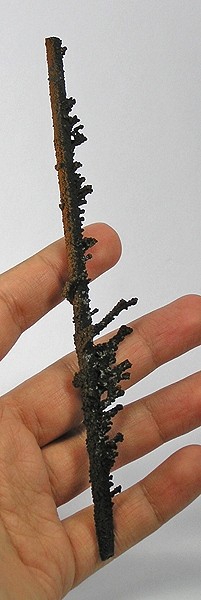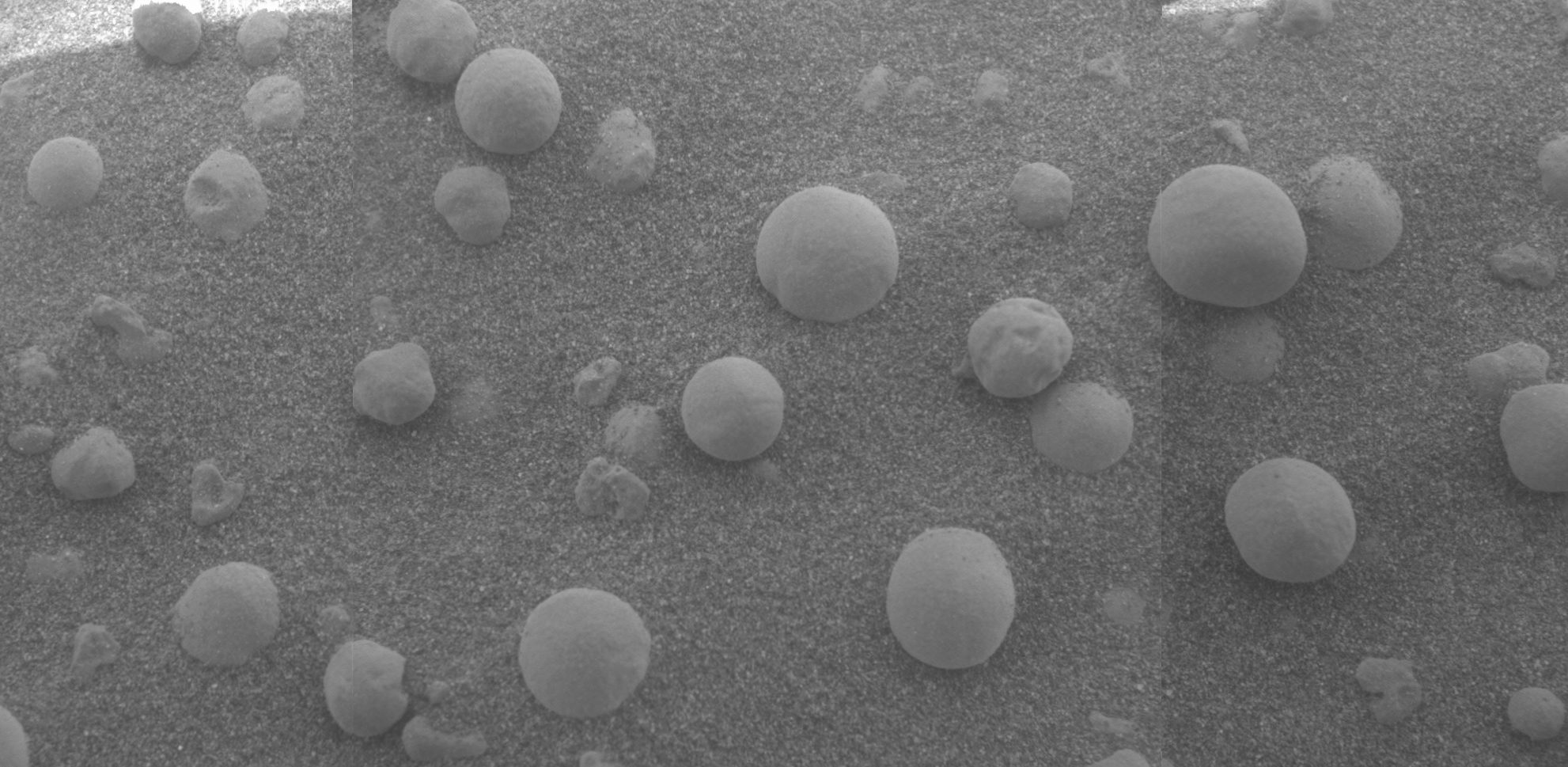|
Kruťaite
Kruťaite, simplified Krut'aite or krutaite, is a rare mineral with the formula Cu Se2. It crystallises in the cubic crystal system. It is part of the pyrite group, being composed of Cu2+ ions and Se22− ions. The mineral is most often found as a dark grey aggregate consisting of tiny crystals no more than a millimeter in size. The crystals are opaque in any size. Etymology Kruťaite was first discovered in Petrovice in Okres Žďár nad Sázavou, Czech Republic and described in 1972 by Zdenek Johan, Paul Picot, Roland Pierrot and Milan Kvaček. It was named after Tomáš Kruťa (1906–1998), a Czech mineralogist and director of the mineralogical laboratory of the Moravian museum. The International Mineralogical Association's rules on naming newly recognized minerals specify that a mineral name derived from a person's name should be capitalized and preserve any diacritics from the person's home language (or its romanization). Thus, the older spellings ''krutaite'' a ... [...More Info...] [...Related Items...] OR: [Wikipedia] [Google] [Baidu] |
List Of Minerals Named After People
This is a list of minerals named after people. The chemical composition of the mineral follows the name. A * Abelsonite: – American physicist Philip Hauge Abelson (1913–2004) * Abswurmbachite: – German mineralogist Irmgard Abs-Wurmbach (1938–2020) *Adamite: – French mineralogist Gilbert Joseph Adam (1795–1881) * Agrellite: – English optical mineralogist Stuart Olof Agrell (1913–1996) * Agricolaite: – German scholar Georgius Agricola (1494–1555) * Aheylite: – American geologist Allen V. Heyl (1918–2008) * Albrechtschraufite: – Albrecht Schrauf (1837–1897), professor of mineralogy, University of Vienna * Alexandrite: Variety of chrysoberyl (): – Russian monarch, Tsar Alexander II of Russia (1818–1881) * Alforsite: – American geologist John T. Alfors (1930–2005) * Allabogdanite: – Alla Bogdanova (1947 - 2004), Geological Institute, Kola Science Centre of Russian Academy of Sciences * Allanite series: sorosilicate – Scottish m ... [...More Info...] [...Related Items...] OR: [Wikipedia] [Google] [Baidu] |
Pyrite Group
The pyrite group of minerals is a set of cubic crystal system minerals with diploidal structure. Each metallic element is bonded to six "dumbbell" pairs of non-metallic elements and each "dumbbell" pair is bonded to six metal atoms. The group is named for its most common member, pyrite (fool's gold), which is sometimes explicitly distinguished from the group's other members as ''iron pyrite''. Pyrrhotite (magnetic pyrite) is magnetic, and is composed of iron and sulfur, but it has a different structure and is not in the pyrite group. Pyrite group minerals Pyrite-group minerals include: * Aurostibite * Cattierite * Dzharkenite * Erlichmanite * Fukuchilite * Gaotaiite * Geversite * Hauerite * Insizwaite * Kruťaite * Krutovite * Laurite * Penroseite * Pyrite The mineral pyrite ( ), or iron pyrite, also known as fool's gold, is an iron sulfide with the chemical formula Fe S2 (iron (II) disulfide). Pyrite is the most abundant sulfide mineral. Py ... [...More Info...] [...Related Items...] OR: [Wikipedia] [Google] [Baidu] |
Selenide Minerals
Selenide minerals are those minerals that have the selenide anion as a main component. Selenides are similar to sulfides Sulfide (also sulphide in British English) is an inorganic anion of sulfur with the chemical formula S2− or a compound containing one or more S2− ions. Solutions of sulfide salts are corrosive. ''Sulfide'' also refers to large families of ... and often grouped with them. Examples include: * achavalite * athabascaite * clausthalite * ferroselite * penroseite * stilleite * tiemannite * umangite References {{Mineral-stub ... [...More Info...] [...Related Items...] OR: [Wikipedia] [Google] [Baidu] |
Czech Orthography
Czech orthography is a system of rules for proper formal writing (orthography) in Czech. The earliest form of separate Latin script specifically designed to suit Czech was devised by Czech theologian and church reformist Jan Hus, the namesake of the Hussite movement, in one of his seminal works, '' De orthographia bohemica'' (''On Bohemian orthography''). The modern Czech orthographic system is diacritic, having evolved from an earlier system which used many digraphs (although one digraph has been kept - ''ch''). The caron (known as ''háček'' in Czech) is added to standard Latin letters to express sounds which are foreign to Latin. The acute accent is used for long vowels. The Czech orthography is considered the model for many other Balto-Slavic languages using the Latin alphabet; Slovak orthography being its direct revised descendant, while the Croatian Gaj's Latin alphabet and its Slovene and Serbian descendant system are largely based on it. The Baltic languages, such ... [...More Info...] [...Related Items...] OR: [Wikipedia] [Google] [Baidu] |
Goethite
Goethite (, ) is a mineral of the diaspore group, consisting of iron(III) oxide-hydroxide, specifically the α- polymorph. It is found in soil and other low-temperature environments such as sediment. Goethite has been well known since ancient times for its use as a pigment (brown ochre). Evidence has been found of its use in paint pigment samples taken from the caves of Lascaux in France. It was first described in 1806 based on samples found in the Hollertszug Mine in Herdorf, Germany. The mineral was named after the German polymath and poet Johann Wolfgang von Goethe (1749–1832). Composition Goethite is an iron oxyhydroxide containing ferric iron. It is the main component of rust and bog iron ore. Goethite's hardness ranges from 5.0 to 5.5 on the Mohs Scale, and its specific gravity varies from 3.3 to 4.3. The mineral forms prismatic needle-like crystals ("needle ironstone") but is more typically massive. Feroxyhyte and lepidocrocite are both polymorphs of ... [...More Info...] [...Related Items...] OR: [Wikipedia] [Google] [Baidu] |
Chalcopyrite
Chalcopyrite ( ) is a copper iron sulfide mineral and the most abundant copper ore mineral. It has the chemical formula CuFeS2 and crystallizes in the tetragonal system. It has a brassy to golden yellow color and a Mohs scale, hardness of 3.5 to 4 on the Mohs scale. Its Streak (mineralogy), streak is diagnostic as green-tinged black. On exposure to air, chalcopyrite tarnishes to a variety of oxides, hydroxides, and sulfates. Associated copper minerals include the sulfides bornite (Cu5FeS4), chalcocite (Cu2S), covellite (CuS), digenite (Cu9S5); carbonates such as malachite and azurite, and rarely oxides such as cuprite (Cu2O). It is rarely found in association with native copper. Chalcopyrite is a conductor of electricity. Copper can be extracted from chalcopyrite ore using various methods. The two predominant methods are pyrometallurgy and hydrometallurgy, the former being the most commercially viable. Etymology The name chalcopyrite comes from the Greek words , which means cop ... [...More Info...] [...Related Items...] OR: [Wikipedia] [Google] [Baidu] |
Umangite
Umangite is a copper selenide mineral, Cu3 Se2, discovered in 1891. It occurs only in small grains or fine granular aggregates with other copper minerals of the sulfide group. It has a hardness of 3. It is blue-black to red-violet in color with a black streak. It has a metallic luster. Umangite is named after the locality of Sierra de Umango, La Rioja province in Argentina. It also occurs at other localities including the Harz Mountains in Germany, and at Skrickerum, Sweden. See also *List of minerals This is a list of minerals which have Wikipedia articles. Minerals are distinguished by various chemical and physical properties. Differences in chemical composition and crystal structure distinguish the various ''species''. Within a mineral speci ... References Copper(I,II) minerals Selenide minerals Tetragonal minerals Minerals in space group 113 {{mineral-stub ... [...More Info...] [...Related Items...] OR: [Wikipedia] [Google] [Baidu] |
Bukovite
Bukovite is a rare selenide mineral with formula Tl2Cu3FeSe4. It is a brown to black metallic mineral which crystallizes in the tetragonal system. It was first described in 1971 for an occurrence in the Bukov uranium mine, Rožná deposit, Vysočina Region, Moravia, Czech Republic. It has also been reported in Skrikerum, near Tryserum, Kalmar, Sweden; near Vernet-la-Varenne, Puy-de-Dôme, France; and Tuminico, Sierra de Cacho, La Rioja Province, Argentina. See also *Beraunite Beraunite is an iron phosphate mineral. It was first described by August Breithaupt for an occurrence in Beraun currently in the Czech Republic. Beraunite occurs as a secondary mineral in iron ore deposits, and as an alteration product of primar ... References Selenide minerals Thallium minerals Copper minerals Iron minerals Tetragonal minerals Minerals in space group 139 {{mineral-stub ... [...More Info...] [...Related Items...] OR: [Wikipedia] [Google] [Baidu] |
Ferroselite
Orthorhombic ferroselite and its isometric polymorph dzharkenite are iron selenides of general formula FeSe2 precipitated under reducing conditions in anoxic environments. They are a source of selenium in the Rocky Mountains where selenium occurrence is associated with Upper Cretaceous shale deposits. In the frame of safety assessment calculations made for deep disposal of high-level radioactive waste, ferroselite and dzharkenite are also considered in geochemical calculations as one of the mineral phases limiting the solubility of Selenium-79. Names Dzharkenite's type locale is in the Suluchekinskoye Se-U deposit in the Dzharkenskaya Depression of the Middle Ili River, Almaty Province, in southeastern Kazakhstan. It was discovered in 1995 and named after the depression. Ferroselite was first reported in 1955 for an occurrence in the Ust’-Uyuk uranium deposit in Tuva, Siberia. Its name comes from the Latin ''ferro'' (iron) and "sel" for selenium. See also * Coccolitho ... [...More Info...] [...Related Items...] OR: [Wikipedia] [Google] [Baidu] |
Hematite
Hematite (), also spelled as haematite, is a common iron oxide compound with the formula, Fe2O3 and is widely found in rocks and soils. Hematite crystals belong to the rhombohedral lattice system which is designated the alpha polymorph of . It has the same crystal structure as corundum () and ilmenite (). With this it forms a complete solid solution at temperatures above . Hematite occurs naturally in black to steel or silver-gray, brown to reddish-brown, or red colors. It is mined as an important ore mineral of iron. It is electrically conductive. Hematite varieties include ''kidney ore'', ''martite'' ( pseudomorphs after magnetite), ''iron rose'' and ''specularite'' ( specular hematite). While these forms vary, they all have a rust-red streak. Hematite is not only harder than pure iron, but also much more brittle. The term ''kidney ore'' may be broadly used to describe botryoidal, mammillary, or reniform hematite. Maghemite is a polymorph of hematite (γ-) with the ... [...More Info...] [...Related Items...] OR: [Wikipedia] [Google] [Baidu] |
Uraninite
Uraninite, also known as pitchblende, is a radioactive, uranium-rich mineral and ore with a chemical composition that is largely UO2 but because of oxidation typically contains variable proportions of U3O8. Radioactive decay of the uranium causes the mineral to contain oxides of lead and trace amounts of helium. It may also contain thorium and rare-earth elements. Overview Uraninite used to be known as pitchblende (from '' pitch'', because of its black color, and ''blende'', from ''blenden'' meaning "to deceive", a term used by German miners to denote minerals whose density suggested metal content, but whose exploitation, at the time they were named, was either unknown or not economically feasible). The mineral has been known since at least the 15th century, from silver mines in the Ore Mountains, on the German/Czech border. The type locality is the historic mining and spa town known as Joachimsthal, the modern-day Jáchymov, on the Czech side of the mountains, where F. E. ... [...More Info...] [...Related Items...] OR: [Wikipedia] [Google] [Baidu] |
Berzelianite
Berzelianite is a rare copper selenide mineral with the formula Cu2 Se. It occurs as thin dendritic crusts or as fine-grained inclusions. It crystallizes in the isometric system, unlike its dimorph, bellidoite, which crystallizes in the tetragonal system. The crystals are opaque and slightly malleable. Occurrence and name Berzelianite was first identified at the Skrikerum Mine (also spelled as Skrickerum Mine) in Valdemarsvik, Östergötland, Sweden in 1850. It was named by James Dwight Dana to honor Jöns Jakob Berzelius, a Swedish chemist who is seen as the father of analytical chemistry. He invented chemical symbol notation and discovered the elements cerium, selenium, silicon, and thorium. Berzelianite often occurs together with eucairite, clausthalite, tiemannite, umangite, klockmannite, aguilarite, crookesite, athabascaite, stromeyerite, polybasite, pearceite, gold, uraninite, pyrite, marcasite, calcite. See also * List of minerals * List of minerals named ... [...More Info...] [...Related Items...] OR: [Wikipedia] [Google] [Baidu] |



